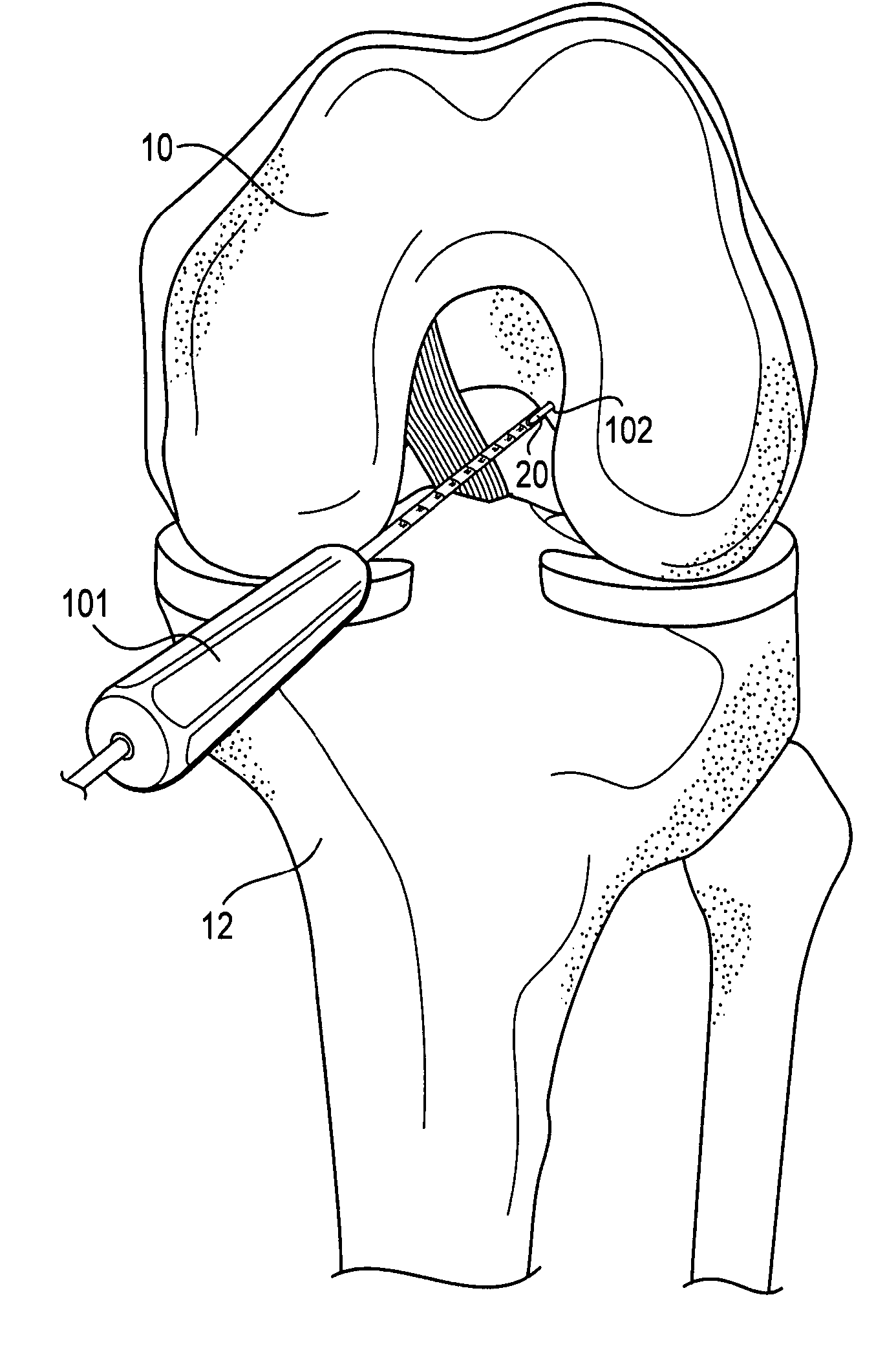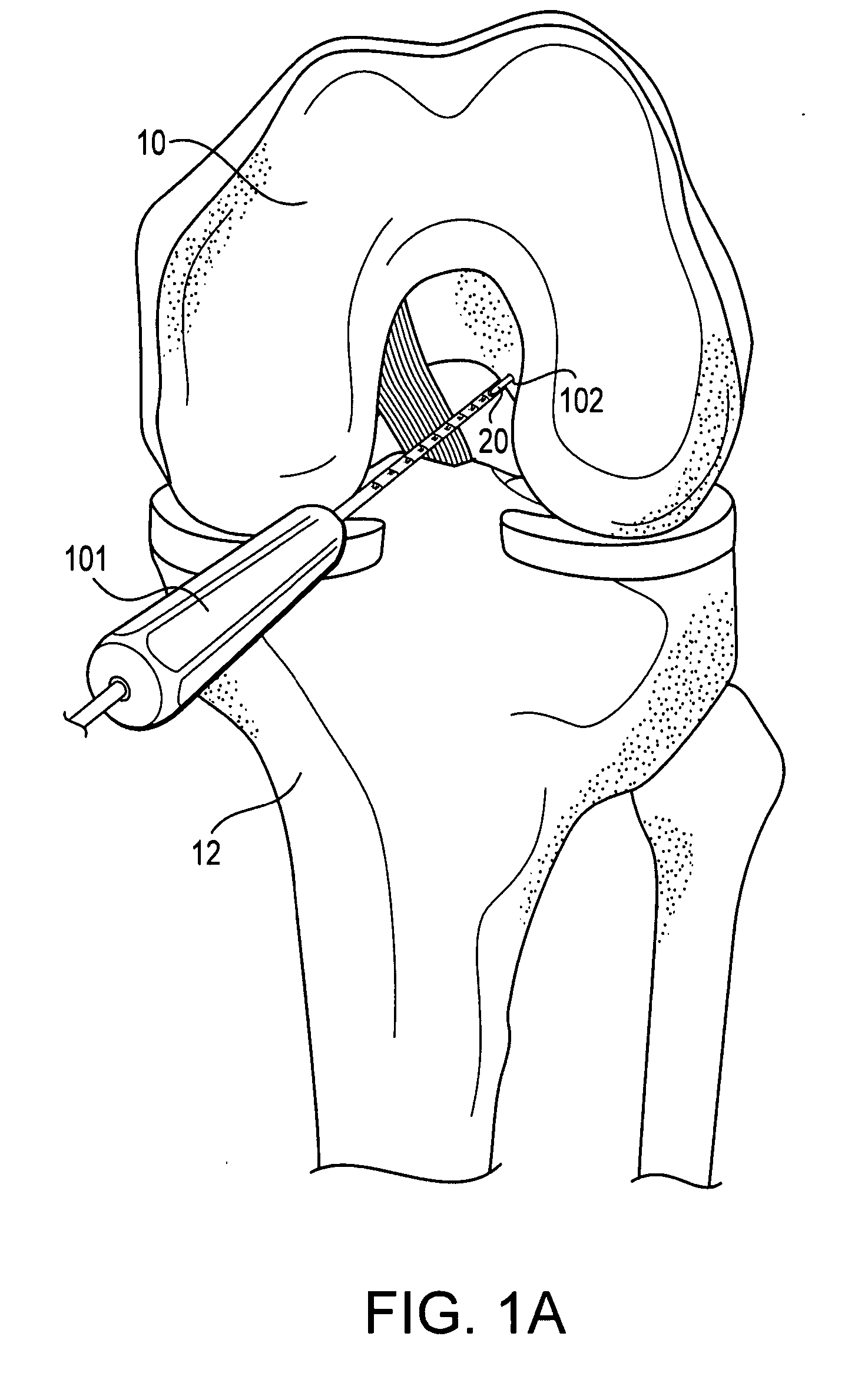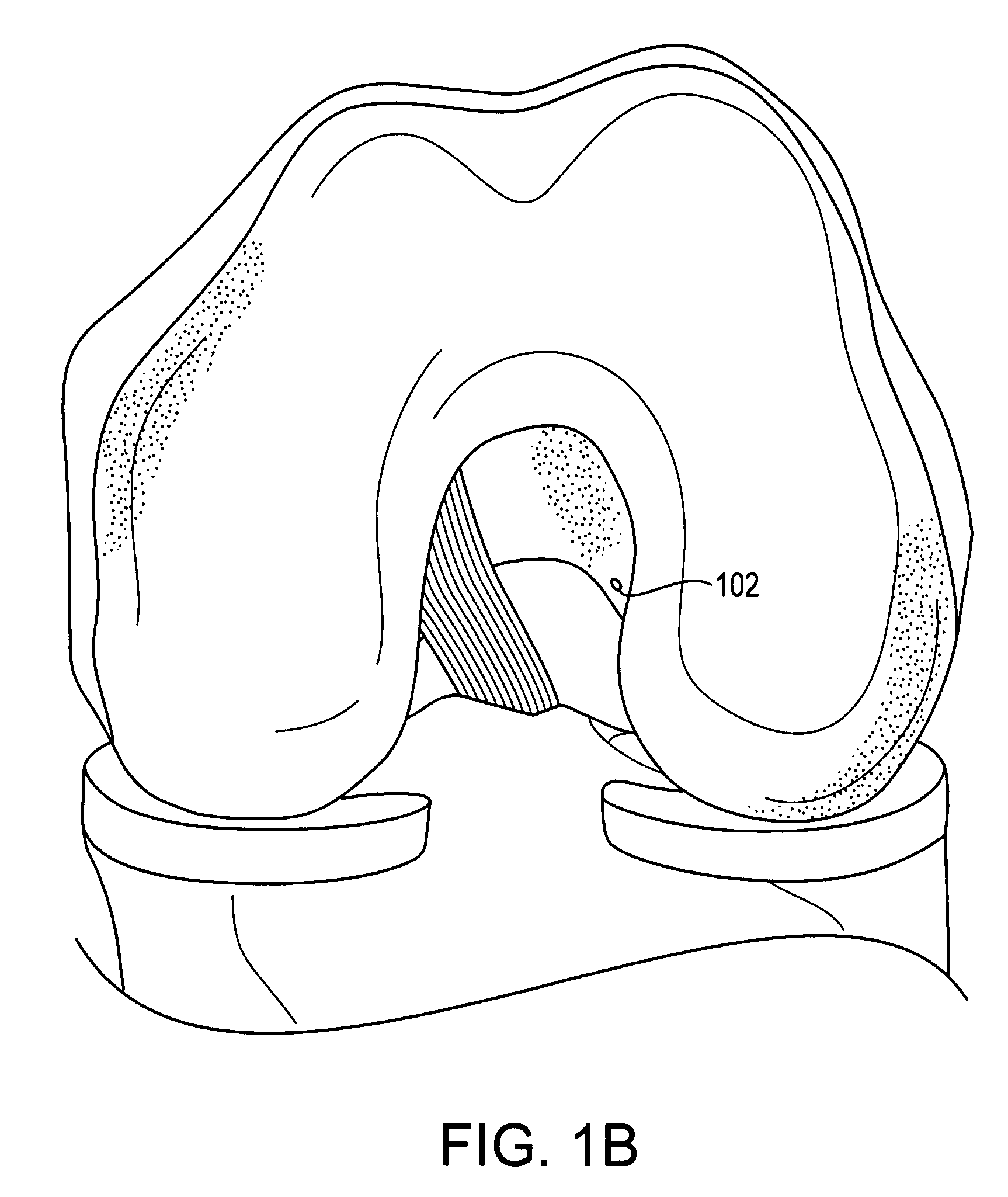Method of ACL reconstruction using dual-sided rotary drill cutter
a rotary drill cutter and rotary drill technology, applied in the field of surgery, can solve the problems of difficult harvesting of bone cores in the joint, significant bone material removal in the formation of the tibial tunnel,
- Summary
- Abstract
- Description
- Claims
- Application Information
AI Technical Summary
Benefits of technology
Problems solved by technology
Method used
Image
Examples
Embodiment Construction
[0028] The present invention provides rotary drill techniques and a dual-sided rotary drill apparatus for forming femoral and tibial bone sockets in a retrograde manner during ligament reconstruction, for example, anterior cruciate ligament (ACL) reconstruction.
[0029] Referring now to the drawings, where like elements are designated by like reference numerals, FIGS. 19-21 illustrate a dual-sided rotary drill cutter 112. The rotary drill cutter 112 features a cylindrical body having a plurality of cutting teeth 501 radiating symmetrically. Advantageously, the dual-sided retrocutter 112 of the present invention has cutting teeth 501 on both sides of the cutter 112. Rotary drill cutter 112 is provided in a selected diameter corresponding to graft size, as discussed further below. The front and back cutting flutes 501 are arranged to facilitate all-inside tibial and femoral socket drilling, as discussed in more detail below. The cutter 112 also includes a threaded cannulation 502. The ...
PUM
 Login to View More
Login to View More Abstract
Description
Claims
Application Information
 Login to View More
Login to View More - R&D
- Intellectual Property
- Life Sciences
- Materials
- Tech Scout
- Unparalleled Data Quality
- Higher Quality Content
- 60% Fewer Hallucinations
Browse by: Latest US Patents, China's latest patents, Technical Efficacy Thesaurus, Application Domain, Technology Topic, Popular Technical Reports.
© 2025 PatSnap. All rights reserved.Legal|Privacy policy|Modern Slavery Act Transparency Statement|Sitemap|About US| Contact US: help@patsnap.com



